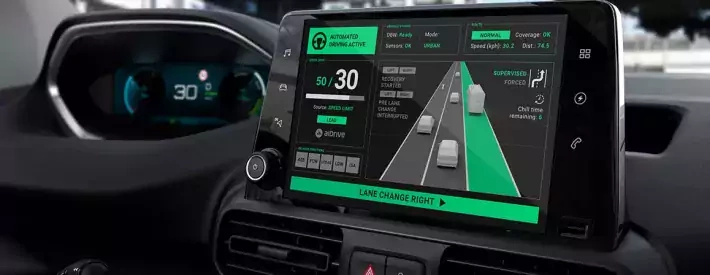Big interview: Steve Gooding

As a member of the Centre for Connected and Autonomous Vehicles’ expert advisory panel, Steve Gooding, Chief Executive of The RAC Foundation, has the ear of government when it comes to cutting-edge vehicle tech.
He’s a motoring man through and through, and incredibly well-informed, so his considered views on ADAS and self-driving are well worth listening to. We started by asking him about the danger of people confusing assisted and automated driving.
“If you’re in a vehicle that is so highly automated that you don’t need to be involved in controlling it – like you’re sitting on a train – then it shouldn’t be a problem,” he says. “But there’s an issue here, and I worry about the stance that the auto industry has taken on it, which is if you tell me the vehicle is driving itself, it better had be.
“We know that with the most advanced driver-assist technologies you might not be doing much of the driving task. But what if you’re required to retake control, and at a moment’s notice?
“I draw a sharp distinction here – and we’re all going to have to get our heads around it, no matter how sceptical some of us were – between advanced driver-assistance and genuine automation. It’s often described as a continuum, but in reality there’s a massive step-change between being a full-time passenger and a part-time driver.
“What I’ve been saying consistently is that the vehicle has to be designed to cope with crisis moments, because humans don’t snap back into control very well. My plea to the designers is for pity’s sake don’t make the human the failsafe – we’re arguably the weakest link in the drivetrain.
“What about the drivers of non-automated vehicles? Imagine, you might be driving along a motorway and a car goes past you with the person in the driving seat apparently fast asleep or reading a broadsheet. You might think ‘What’s that idiot doing?’ and maybe sound your horn. You might think, ‘Good grief, there’s going to be a crash, I’d better call the police’. How are we going to feel about that?
“Or imagine you’re in a supermarket car park. Other shoppers struggling with their bags might be quite shocked to see a car coming towards them that appears to have nobody in it. It’s not science fiction anymore. We need to move the conversation on, to start gearing people up for the thought that this is going to happen, and soon.”
We then get into the recent Highway Code changes. “The first incarnation of driverless technology that appears to be headed our way is the automated lane keeping system (ALKS),” he says. “That’s the technology that’s closest to market and closest to deployment in this country.
“ALKS is cleared at United Nations Economic Commission for Europe level for traffic moving at no more than 37mph. It enables the vehicle to speed up and slow down and stay within a defined lane on a motorway.
“Of course, ALKS is some way short of genuine self-driving – but one might imagine a button by which, in the same way that I could trigger adaptive cruise control on a motorway, I could go one step further and trigger a system that would take me on to a certain junction, within the legal speed limit, anticipating the traffic ahead, steering and braking if necessary. That’s a world I suspect many drivers would welcome.”




